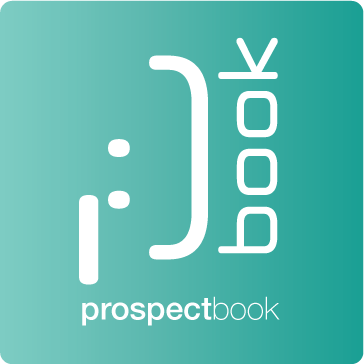
What do you want to achieve?

Summarise answers to possible questions!

What do you need to ask?

Use a voice recorder to listen to yourself.
Characteristics for a successful conversation:
Phone Sales Guidelines
Never dial any number without being prepared. Whether you’re making your first or your 400th call, there are a few things to do before you pick up the phone:
1. Define your purpose: Ask yourself what you want to achieve from this call and how you’ll get it.
2. Prepare questions in advance: What questions do you need to ask to achieve your goal?
3. Brainstorm answers: What are the possible excuses your prospect will have to your questions? By thinking these through in advance, you’ll be more prepared to handle them.
4. Practice: Whether pitching a new product or giving the same line a hundred times, check-in every few months to see how you’re doing. Record yourself giving a practice presentation and conduct your call review to tune up your demo.
You can sense when someone’s smiling on the phone, right? It’s not just your imagination. Talking with a grin creates a higher frequency in your mouth which changes the tone of your voice and reassures the listener.
To practice this technique, record a sentence when you’re not smiling. Then, record the same sentence again but, this time, with a smile and notice the difference. You can get a relaxed and persuasive tone by putting your voice’s most powerful tools to work. Here’s how:
1. Pace: If you speak too slow, your listener might get bored or frustrated. If you speak too fast, they may miss something. An expert caller will mirror the pace of the person they’re speaking with, and remember: It takes 10-30 seconds to adjust to a new voice, so give your listener time to adjust to you before diving into the most important part of your presentation.
2. Volume: A drawn-out, high-pitched voice says, “I don’t believe what I’m hearing,” while a low-and-slow pitch says, “I want to be left alone.” Aim for an emphatic, high-pitched volume telling your listener you’re enthusiastic. Avoid sounding loud and abrupt because that indicates that you’re angry and not open to discussion.
3. Tone: Don’t apologise for “interrupting” with your call. This sounds like you’ve done something wrong, which you haven’t. Instead, act as if this call is doing your listener a favour.
4. Clarity: Be clear and concise in what you stress in your presentation. Consider the meaning of a sentence and how important the stress of each word can be. Take these examples:
•Apathetic: “What would you like us to do about it?”
•Defensive: “What would you like me to do about it?”
•Curious: “What would you like me to do about it?”
Don’t overwhelm prospects with your intense enthusiasm. Starting sales calls with an eager “Hey! How are you [prospect name]?!” might sound pushy and fake. Maintain a genuine tone and mirror your prospect’s behaviour. Sprinkle some positive words/phrases into your call, like:
- “Brilliant”
- “Certainly”
- “You’re welcome”
- “Fantastic”
- “It’s my pleasure”
- “Of course”
- “Immediately”
- “It’s no trouble”
- “I will find out for you”
- “Absolutely”
- “Rest assured”
- “Wonderful”
- “Please”
- “Thank you”
- “That’s great”
And don’t forget to establish rapport. The best way to start on a positive note is to be polite, honest, and personalised with your prospect. Use their name, give them your full attention, and take ownership of follow-ups and next steps.
All of this is worth nothing unless you close the call well. Be clear, recap what you’ve discussed, and always thank your prospect for their time.
1. Give verbal signs the call is ending: A common way to do this is by giving a summary of the discussion and explaining the next steps.
2. Make sure you’ve covered it all: Ask your prospect, “Is there anything we didn’t cover that I can tell you about before we end the call?”
3. Always be thankful: Never end a call without thanking your prospect for their time and attention. They didn’t have to take your call, so acknowledging their busy schedules is always appreciated.
Successful phone calls are an art. Master these techniques and see more deals move forward and your peers and managers will take notice.
How to Talk to Prospect Clients on the Phone

What do you want to achieve?

Summarise answers to possible questions!

What do you need to ask?

Use a voice recorder to listen to yourself.
Characteristics for a successful conversation:
Phone Sales Guidelines
Never dial any number without being prepared. Whether you’re making your first or your 400th call, there are a few things to do before you pick up the phone:
1. Define your purpose: Ask yourself what you want to achieve from this call and how you’ll get it.
2. Prepare questions in advance: What questions do you need to ask to achieve your goal?
3. Brainstorm answers: What are the possible excuses your prospect will have to your questions? By thinking these through in advance, you’ll be more prepared to handle them.
4. Practice: Whether pitching a new product or giving the same line a hundred times, check-in every few months to see how you’re doing. Record yourself giving a practice presentation and conduct your call review to tune up your demo.
You can sense when someone’s smiling on the phone, right? It’s not just your imagination. Talking with a grin creates a higher frequency in your mouth which changes the tone of your voice and reassures the listener.
To practice this technique, record a sentence when you’re not smiling. Then, record the same sentence again but, this time, with a smile and notice the difference. You can get a relaxed and persuasive tone by putting your voice’s most powerful tools to work. Here’s how:
1. Pace: If you speak too slow, your listener might get bored or frustrated. If you speak too fast, they may miss something. An expert caller will mirror the pace of the person they’re speaking with, and remember: It takes 10-30 seconds to adjust to a new voice, so give your listener time to adjust to you before diving into the most important part of your presentation.
2. Volume: A drawn-out, high-pitched voice says, “I don’t believe what I’m hearing,” while a low-and-slow pitch says, “I want to be left alone.” Aim for an emphatic, high-pitched volume telling your listener you’re enthusiastic. Avoid sounding loud and abrupt because that indicates that you’re angry and not open to discussion.
3. Tone: Don’t apologise for “interrupting” with your call. This sounds like you’ve done something wrong, which you haven’t. Instead, act as if this call is doing your listener a favour.
4. Clarity: Be clear and concise in what you stress in your presentation. Consider the meaning of a sentence and how important the stress of each word can be. Take these examples:
•Apathetic: “What would you like us to do about it?”
•Defensive: “What would you like me to do about it?”
•Curious: “What would you like me to do about it?”
Don’t overwhelm prospects with your intense enthusiasm. Starting sales calls with an eager “Hey! How are you [prospect name]?!” might sound pushy and fake. Maintain a genuine tone and mirror your prospect’s behaviour. Sprinkle some positive words/phrases into your call, like:
- “Brilliant”
- “Certainly”
- “You’re welcome”
- “Fantastic”
- “It’s my pleasure”
- “Of course”
- “Immediately”
- “It’s no trouble”
- “I will find out for you”
- “Absolutely”
- “Rest assured”
- “Wonderful”
- “Please”
- “Thank you”
- “That’s great”
And don’t forget to establish rapport. The best way to start on a positive note is to be polite, honest, and personalised with your prospect. Use their name, give them your full attention, and take ownership of follow-ups and next steps.
All of this is worth nothing unless you close the call well. Be clear, recap what you’ve discussed, and always thank your prospect for their time.
1. Give verbal signs the call is ending: A common way to do this is by giving a summary of the discussion and explaining the next steps.
2. Make sure you’ve covered it all: Ask your prospect, “Is there anything we didn’t cover that I can tell you about before we end the call?”
3. Always be thankful: Never end a call without thanking your prospect for their time and attention. They didn’t have to take your call, so acknowledging their busy schedules is always appreciated.
Successful phone calls are an art. Master these techniques and see more deals move forward and your peers and managers will take notice.
How to Talk to Prospect Clients on the Phone

What do you want to achieve?

Summarise answers to possible questions!

What do you need to ask?

Use a voice recorder to listen to yourself.
Characteristics for a successful conversation:
Phone Sales Guidelines
Never dial any number without being prepared. Whether you’re making your first or your 400th call, there are a few things to do before you pick up the phone:
1. Define your purpose: Ask yourself what you want to achieve from this call and how you’ll get it.
2. Prepare questions in advance: What questions do you need to ask to achieve your goal?
3. Brainstorm answers: What are the possible excuses your prospect will have to your questions? By thinking these through in advance, you’ll be more prepared to handle them.
4. Practice: Whether pitching a new product or giving the same line a hundred times, check-in every few months to see how you’re doing. Record yourself giving a practice presentation and conduct your call review to tune up your demo.
You can sense when someone’s smiling on the phone, right? It’s not just your imagination. Talking with a grin creates a higher frequency in your mouth which changes the tone of your voice and reassures the listener.
To practice this technique, record a sentence when you’re not smiling. Then, record the same sentence again but, this time, with a smile and notice the difference. You can get a relaxed and persuasive tone by putting your voice’s most powerful tools to work. Here’s how:
1. Pace: If you speak too slow, your listener might get bored or frustrated. If you speak too fast, they may miss something. An expert caller will mirror the pace of the person they’re speaking with, and remember: It takes 10-30 seconds to adjust to a new voice, so give your listener time to adjust to you before diving into the most important part of your presentation.
2. Volume: A drawn-out, high-pitched voice says, “I don’t believe what I’m hearing,” while a low-and-slow pitch says, “I want to be left alone.” Aim for an emphatic, high-pitched volume telling your listener you’re enthusiastic. Avoid sounding loud and abrupt because that indicates that you’re angry and not open to discussion.
3. Tone: Don’t apologise for “interrupting” with your call. This sounds like you’ve done something wrong, which you haven’t. Instead, act as if this call is doing your listener a favour.
4. Clarity: Be clear and concise in what you stress in your presentation. Consider the meaning of a sentence and how important the stress of each word can be. Take these examples:
•Apathetic: “What would you like us to do about it?”
•Defensive: “What would you like me to do about it?”
•Curious: “What would you like me to do about it?”
Don’t overwhelm prospects with your intense enthusiasm. Starting sales calls with an eager “Hey! How are you [prospect name]?!” might sound pushy and fake. Maintain a genuine tone and mirror your prospect’s behaviour. Sprinkle some positive words/phrases into your call, like:
- “Brilliant”
- “Certainly”
- “You’re welcome”
- “Fantastic”
- “It’s my pleasure”
- “Of course”
- “Immediately”
- “It’s no trouble”
- “I will find out for you”
- “Absolutely”
- “Rest assured”
- “Wonderful”
- “Please”
- “Thank you”
- “That’s great”
And don’t forget to establish rapport. The best way to start on a positive note is to be polite, honest, and personalised with your prospect. Use their name, give them your full attention, and take ownership of follow-ups and next steps.
All of this is worth nothing unless you close the call well. Be clear, recap what you’ve discussed, and always thank your prospect for their time.
1. Give verbal signs the call is ending: A common way to do this is by giving a summary of the discussion and explaining the next steps.
2. Make sure you’ve covered it all: Ask your prospect, “Is there anything we didn’t cover that I can tell you about before we end the call?”
3. Always be thankful: Never end a call without thanking your prospect for their time and attention. They didn’t have to take your call, so acknowledging their busy schedules is always appreciated.
Successful phone calls are an art. Master these techniques and see more deals move forward and your peers and managers will take notice.
How to Talk to Prospect Clients on the Phone

What do you want to achieve?

Summarise answers to possible questions!

What do you need to ask?

Use a voice recorder to listen to yourself.
Characteristics for a successful conversation:
Phone Sales Guidelines
Never dial any number without being prepared. Whether you’re making your first or your 400th call, there are a few things to do before you pick up the phone:
1. Define your purpose: Ask yourself what you want to achieve from this call and how you’ll get it.
2. Prepare questions in advance: What questions do you need to ask to achieve your goal?
3. Brainstorm answers: What are the possible excuses your prospect will have to your questions? By thinking these through in advance, you’ll be more prepared to handle them.
4. Practice: Whether pitching a new product or giving the same line a hundred times, check-in every few months to see how you’re doing. Record yourself giving a practice presentation and conduct your call review to tune up your demo.
You can sense when someone’s smiling on the phone, right? It’s not just your imagination. Talking with a grin creates a higher frequency in your mouth which changes the tone of your voice and reassures the listener.
To practice this technique, record a sentence when you’re not smiling. Then, record the same sentence again but, this time, with a smile and notice the difference. You can get a relaxed and persuasive tone by putting your voice’s most powerful tools to work. Here’s how:
1. Pace: If you speak too slow, your listener might get bored or frustrated. If you speak too fast, they may miss something. An expert caller will mirror the pace of the person they’re speaking with, and remember: It takes 10-30 seconds to adjust to a new voice, so give your listener time to adjust to you before diving into the most important part of your presentation.
2. Volume: A drawn-out, high-pitched voice says, “I don’t believe what I’m hearing,” while a low-and-slow pitch says, “I want to be left alone.” Aim for an emphatic, high-pitched volume telling your listener you’re enthusiastic. Avoid sounding loud and abrupt because that indicates that you’re angry and not open to discussion.
3. Tone: Don’t apologise for “interrupting” with your call. This sounds like you’ve done something wrong, which you haven’t. Instead, act as if this call is doing your listener a favour.
4. Clarity: Be clear and concise in what you stress in your presentation. Consider the meaning of a sentence and how important the stress of each word can be. Take these examples:
•Apathetic: “What would you like us to do about it?”
•Defensive: “What would you like me to do about it?”
•Curious: “What would you like me to do about it?”
Don’t overwhelm prospects with your intense enthusiasm. Starting sales calls with an eager “Hey! How are you [prospect name]?!” might sound pushy and fake. Maintain a genuine tone and mirror your prospect’s behaviour. Sprinkle some positive words/phrases into your call, like:
- “Brilliant”
- “Certainly”
- “You’re welcome”
- “Fantastic”
- “It’s my pleasure”
- “Of course”
- “Immediately”
- “It’s no trouble”
- “I will find out for you”
- “Absolutely”
- “Rest assured”
- “Wonderful”
- “Please”
- “Thank you”
- “That’s great”
And don’t forget to establish rapport. The best way to start on a positive note is to be polite, honest, and personalised with your prospect. Use their name, give them your full attention, and take ownership of follow-ups and next steps.
All of this is worth nothing unless you close the call well. Be clear, recap what you’ve discussed, and always thank your prospect for their time.
1. Give verbal signs the call is ending: A common way to do this is by giving a summary of the discussion and explaining the next steps.
2. Make sure you’ve covered it all: Ask your prospect, “Is there anything we didn’t cover that I can tell you about before we end the call?”
3. Always be thankful: Never end a call without thanking your prospect for their time and attention. They didn’t have to take your call, so acknowledging their busy schedules is always appreciated.
Successful phone calls are an art. Master these techniques and see more deals move forward and your peers and managers will take notice.
